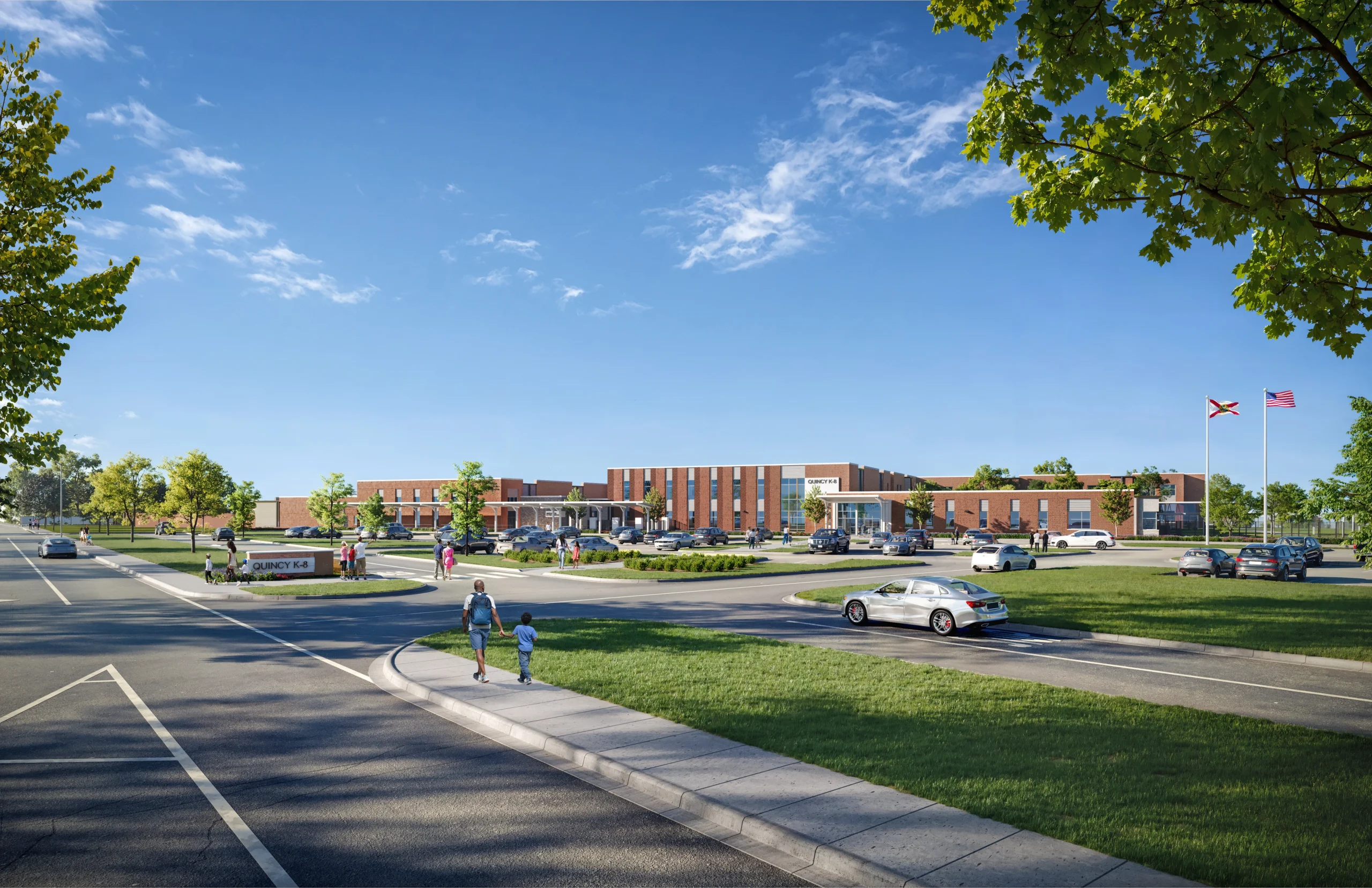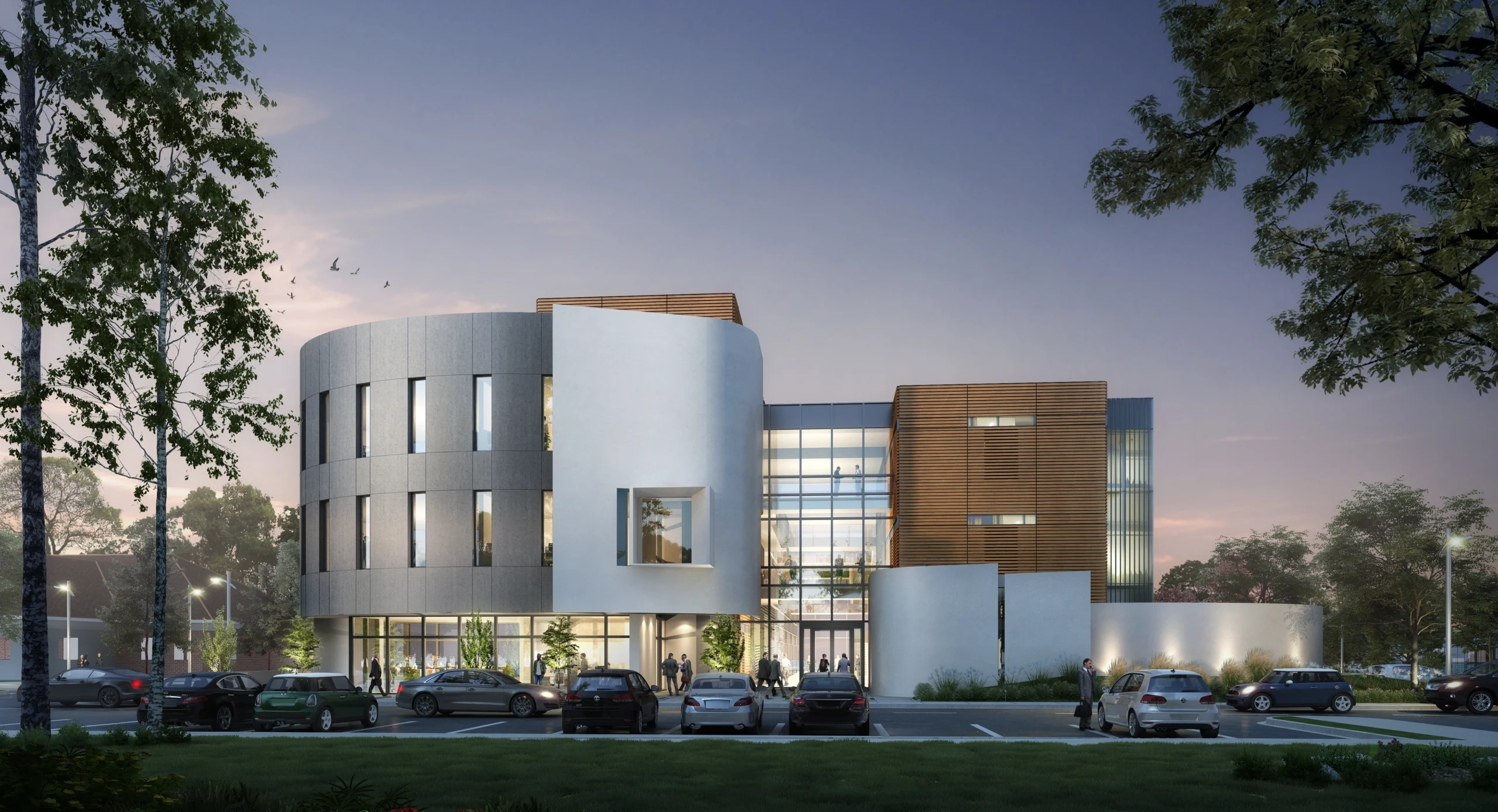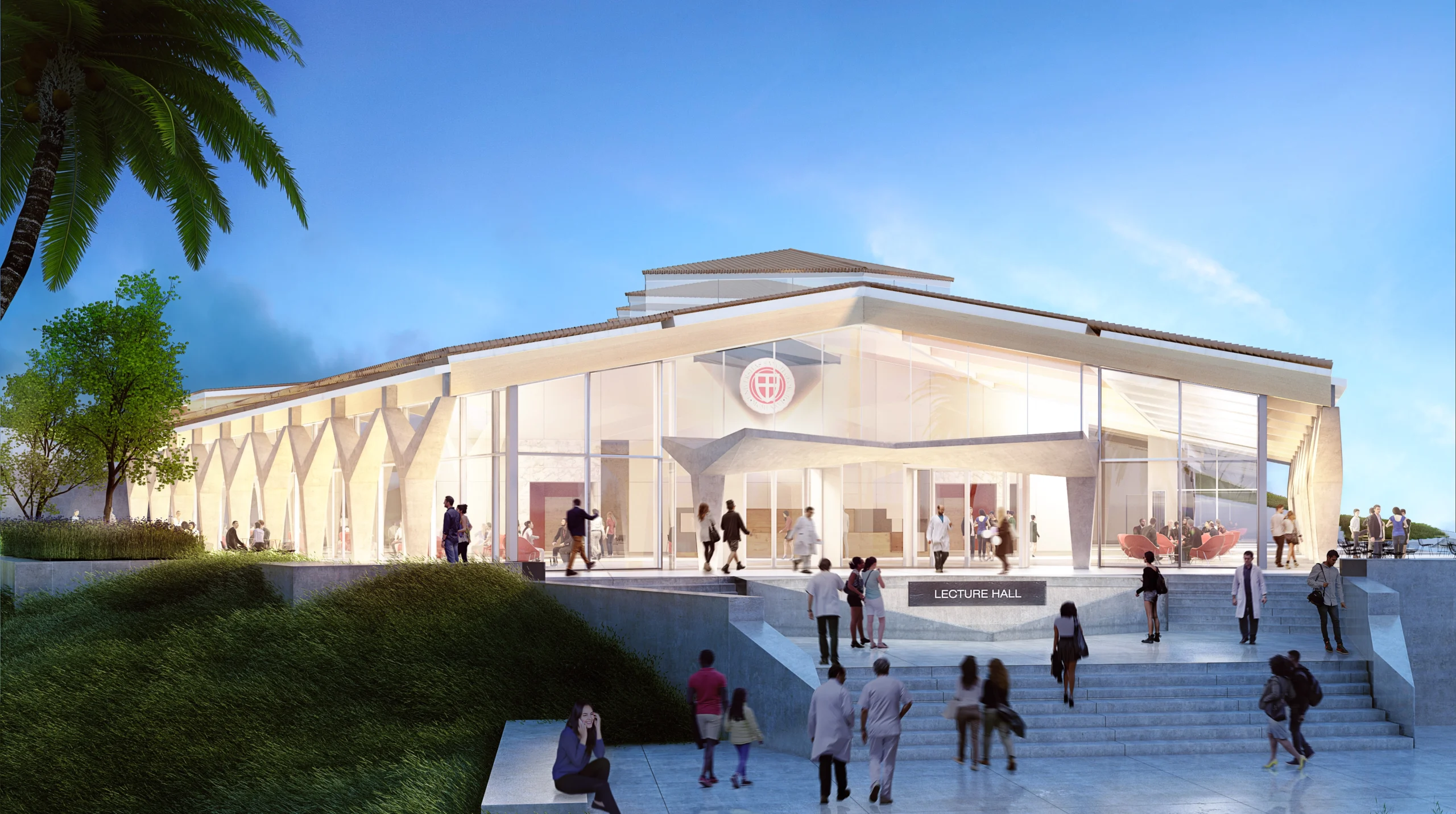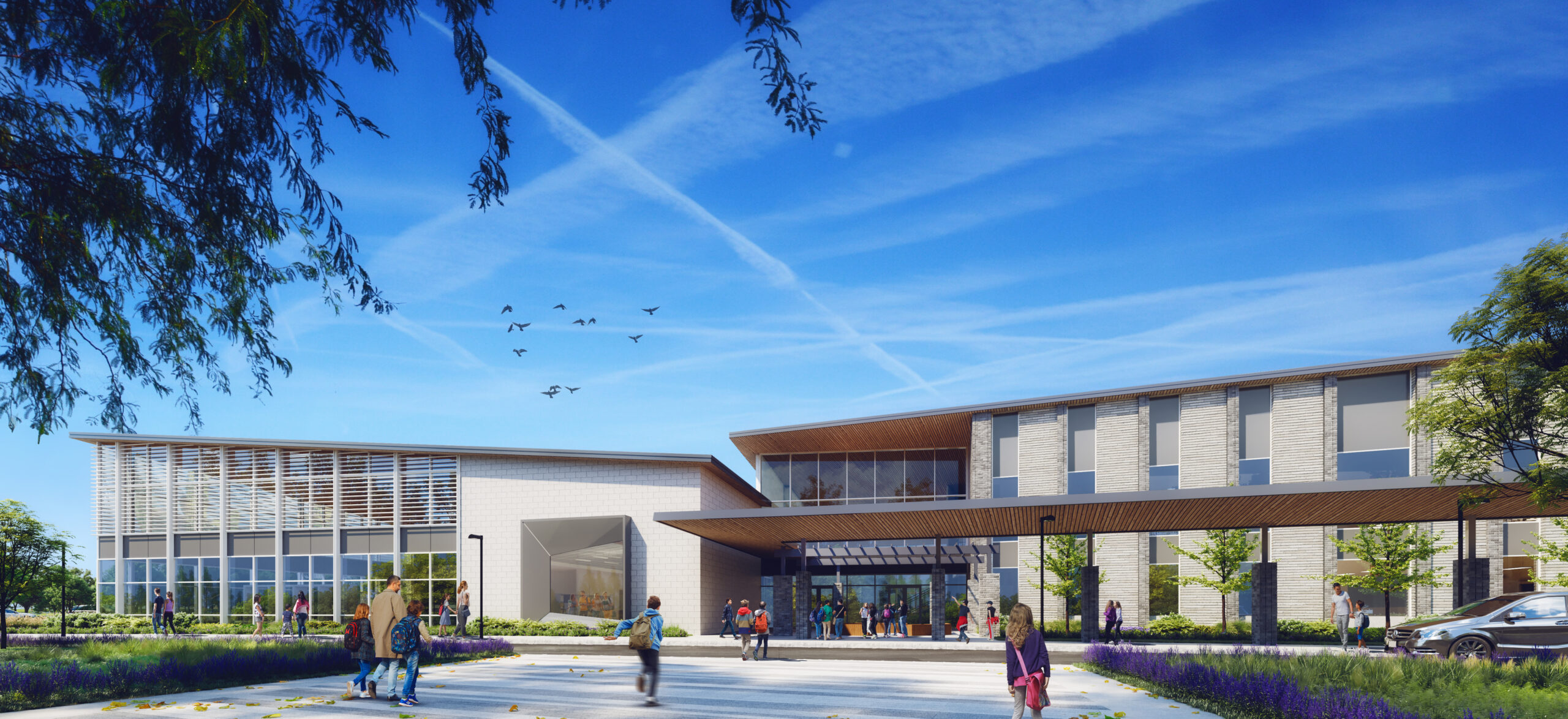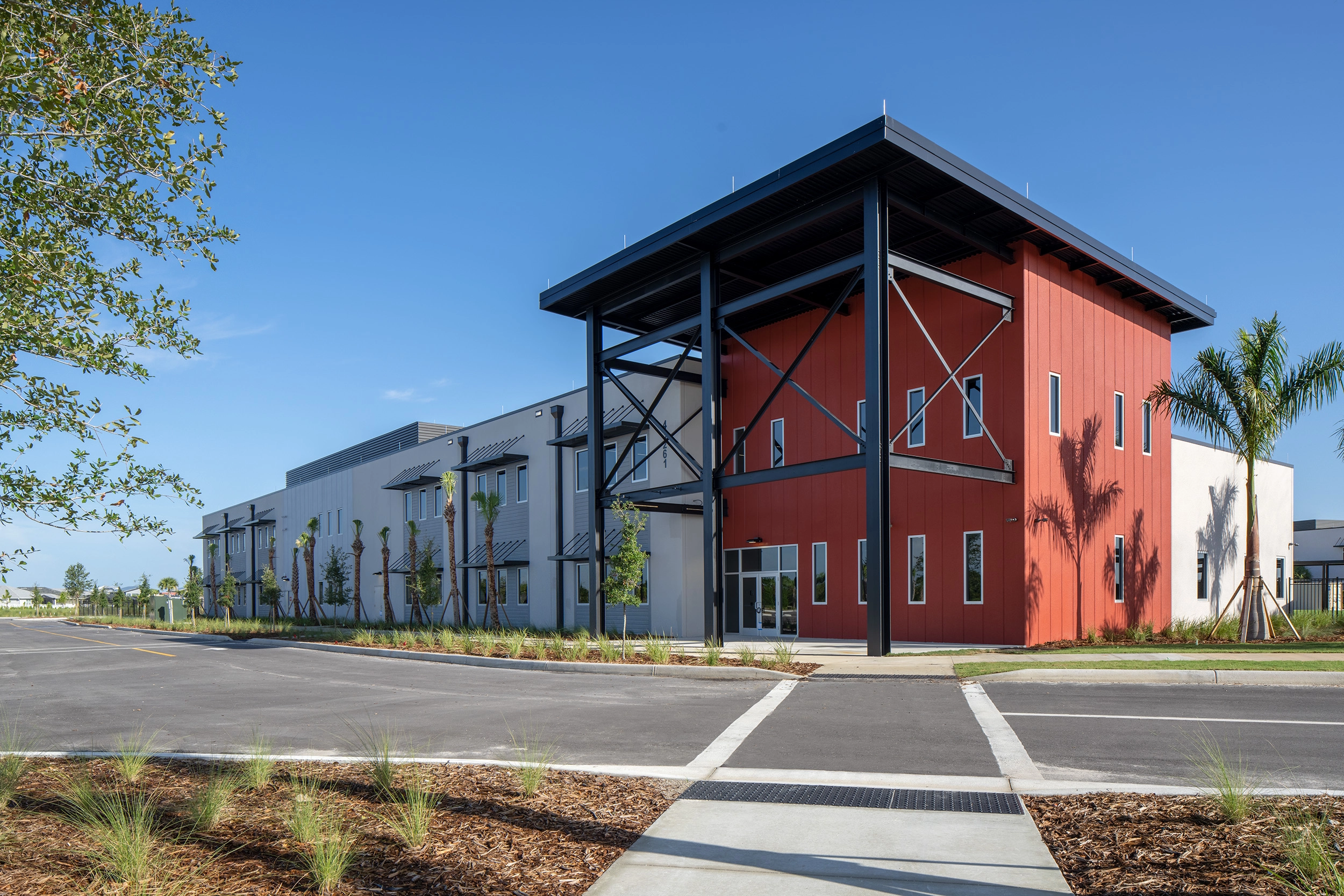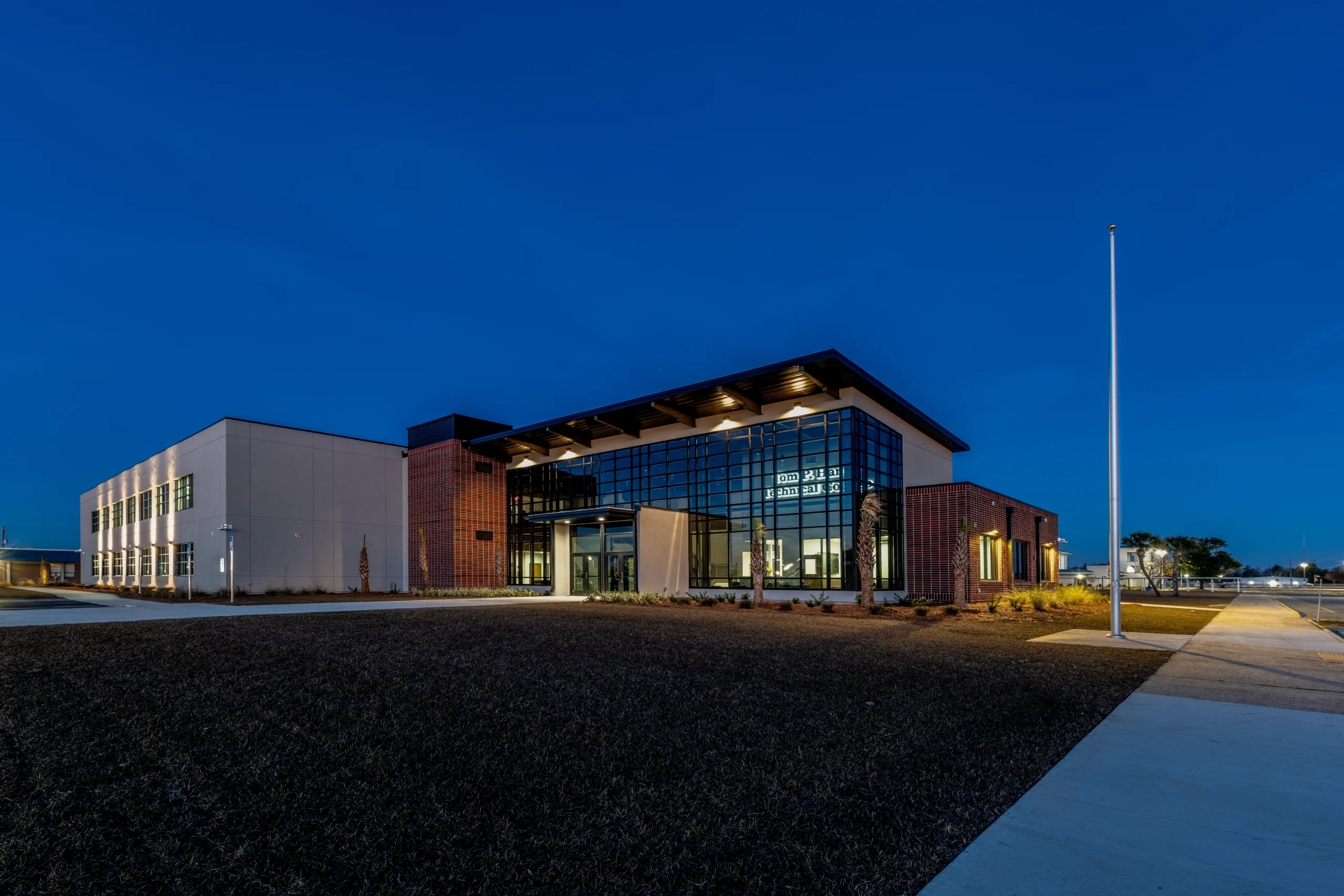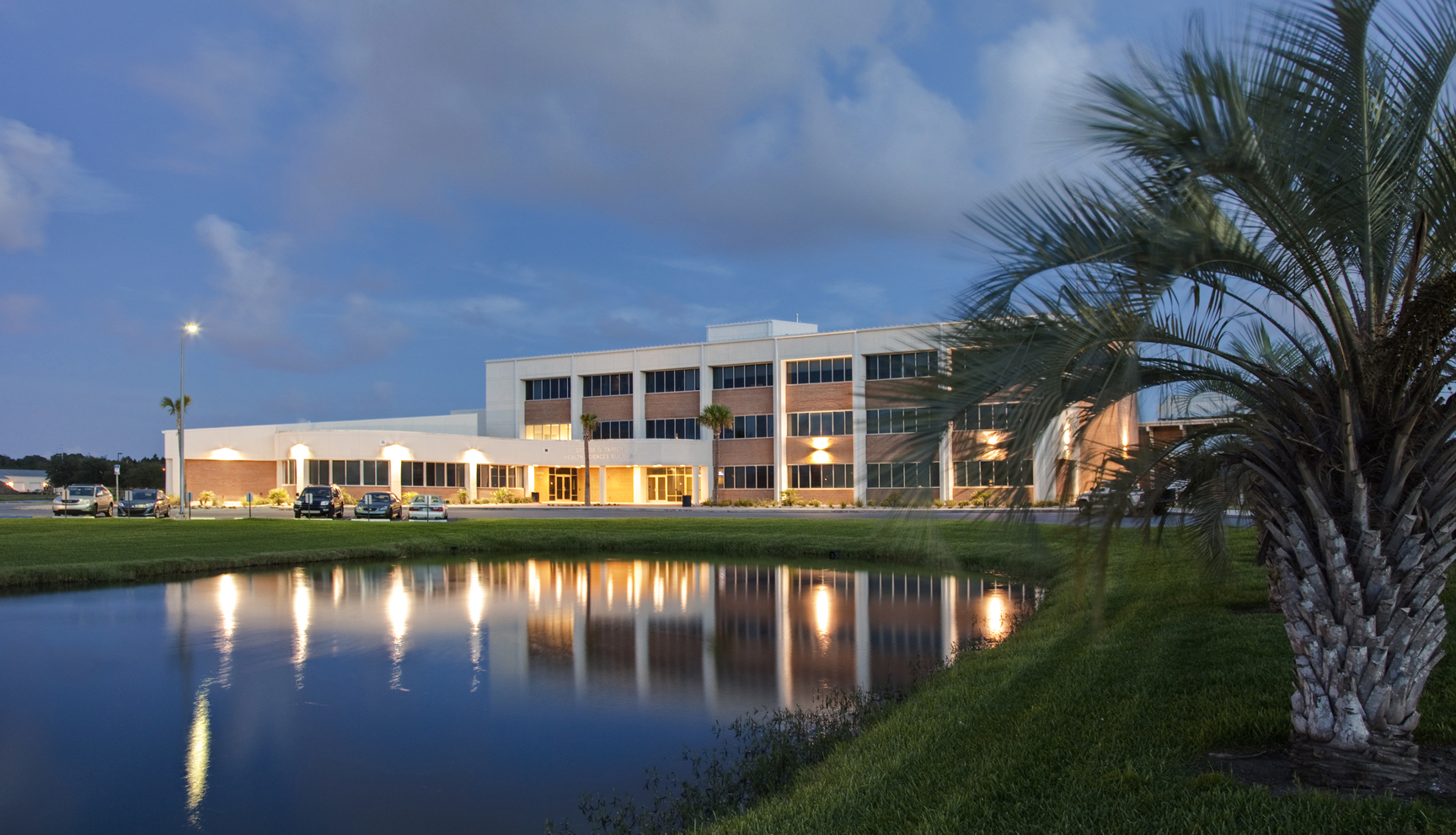The new Lecture Hall, located on the campus of an independent medical university on a Caribbean Island in the West Indies, will provide a much-needed multi-functional academic center for the school. Sited on a promontory overlooking the campus and the beautiful bays beyond, the building will command a civic type of presence, becoming a landmark destination as well as a beacon when darkness falls across the campus.
The 40,000-square-foot building will consist of a large main hall adjoined by two smaller side halls, providing a total capacity of approximately 1,700 seats. With the integration of retractable telescopic seating systems, the upper portion of the main hall and both side halls can be easily reconfigured to accommodate a variety of uses and teaching styles, transforming these venues to host a multitude of events.
A multi-level series of steps, benches and landscaped areas will negotiate the 40 SF elevation change from the main roadway to the front entrance and lobby. Upon entering the lobby, visitors are greeted by an open plan cafe and a variety of seating options.
Wrapping the main hall on three sides, the lobby provides ample space for a variety of activities, including exhibition, banquets, group and private study, as well as a pleasant place for all members of the university family to come together as a community.
Exterior terraces on either side of the building will provide an extension to the interior lobby space for public gatherings and respite from academic functions. The glass enclosure containing the lobby will establish a strong connection to the immediate landscape and the beautiful surrounding terrain, encouraging activities to easily flow from inside to outside.
Structurally, the roof is composed of laminated timber beams and rafters forming a diaphragm that will span the lobbies and auditoriums. Exposing the grid of laminated wood on the interior will express structural integrity as well as create a sense of order for the building. Y-shaped concrete columns marching along the angled sides of the building will support the roof diaphragm and consist of a hybrid of precast elements and cast-in-place connections.
While the Lecture Hall, with its symmetrical plan, makes use of the predominant clay tile roof found on adjacent campus buildings, the form, detailing and structural characteristics will give the new building a modern feel and further separate it as a centerpiece for the campus.
Cultivating greater vitality and fostering a greater sense of community among faculty, students, and visitors, the Lecture Hall should quickly become the social hub of the campus.


